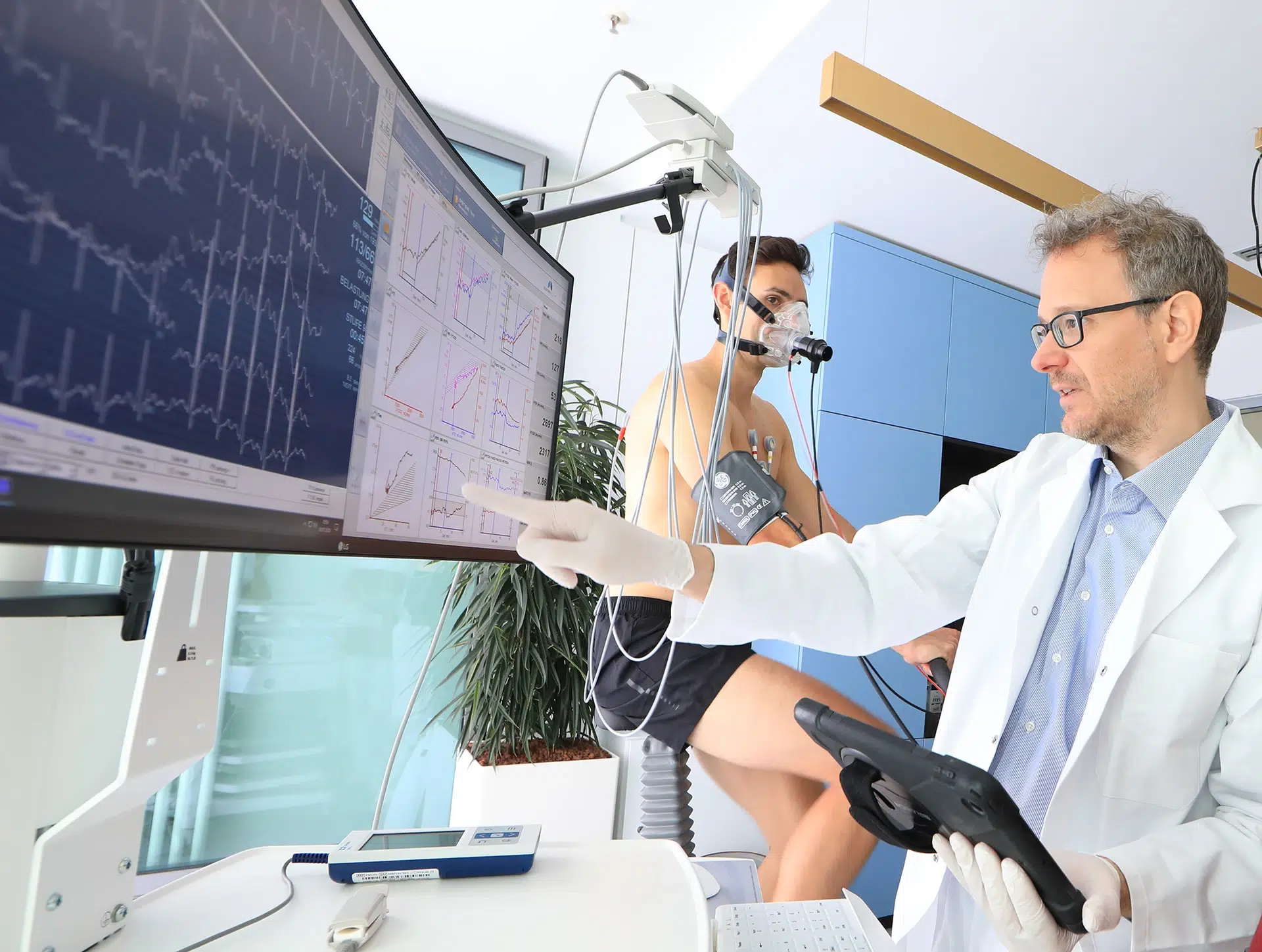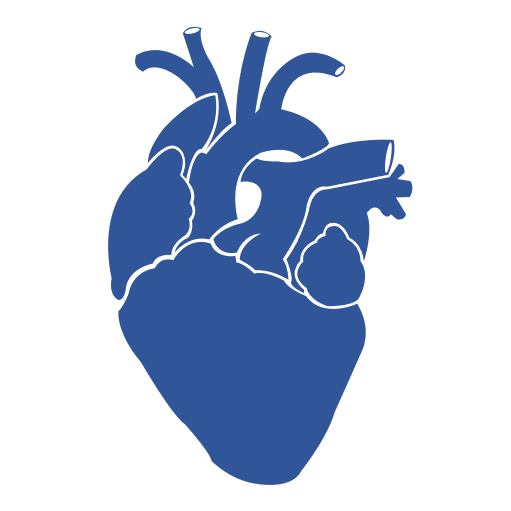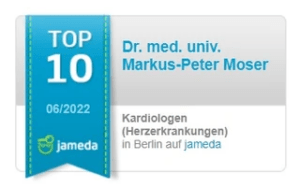When is a Cardiac Arrhythmia life-threatening and what can be done about it?
We speak of a cardiac arrhythmia when the heart is out of rhythm too often, i.e. it beats too fast, too slowly or irregularly.
As a cardiologist, I am often asked by my patients when a cardiac arrhythmia is seriously dangerous. I would like to answer this question for you as helpfully and concretely as possible and give tips on what you can do.
But what exactly is a cardiac arrhythmia?
What is a cardiac arrhythmia?
The heart rhythm disorder is also known as arrhythmia, heart stuttering or palpitations. This means that the heart is out of rhythm and beats either too slowly, too fast or irregularly. Heart palpitations can occasionally occur even in healthy people. However, as soon as these “disturbances” of the electrical impulses that trigger the heartbeat occur more frequently and are symptomatic, we speak of a cardiac arrhythmia.
What is atrial fibrillation?
Atrial fibrillation, for example, is a very well-known form of cardiac arrhythmia.
- The incidence of atrial fibrillation in the general population is 2.2 percent on average.
- For 70 to 80 year olds, we see an incidence of up to 16 percent.
This disturbance of the heart rhythm occurs when the pulse beats absolutely irregularly (arrhythmia absoluta) and the atria in the heart move (contract) in an uncoordinated way. The resulting turbulence can cause blood clots to form in the atrium, which can break loose and travel to the brain or other organs (known as an embolism). If this form of heart stuttering occurs regularly, the risk of stroke increases. The dangerous thing about atrial fibrillation is that it is very often not noticed!
What are heart strokes or so-called extrasystoles?
Another example of frequent cardiac arrhythmias is cardiac stuttering. These are mostly so-called extrasystoles. We distinguish between two types according to the origin of the electrical impulse:
- supraventricular extrasystoles (the electronic origin is above the ventricles)
- ventricular extrasystoles (the electrical origin is in the ventricles)
What they both have in common is that they occur to a certain extent in almost everyone. Only when they occur very frequently should a more in-depth diagnosis be made. Extrasystoles can be compared to a moped engine that occasionally misfires. This is usually harmless but may require a clarifying conversation. However, some people experience them as very unpleasant, usually in the form of a clearly perceptible extra beat, combined with a short pause that is felt like a heart skipping a beat.
Symptoms – How can I recognise a cardiac arrhythmia?
The signs of a cardiac arrhythmia can be very different and also unpleasant. The following symptoms can indicate a cardiac arrhythmia:
- The heart races or the chest throbs.
- Anxiety and inner turmoil can be added.
- Chest pain or a feeling of pressure and tightness in the chest may also occur.
- Some sufferers have shortness of breath and a feeling of dizziness.
- Very severe cardiac arrhythmias can lead to loss of consciousness.
If the heartbeat is too slow, you often feel listless and constantly tired. These are usually signs of circulatory problems because the blood flow is poor. In some cases, a slow heartbeat can cause visual disturbances or brief unconsciousness.
Sudden cardiac death
Sudden cardiac death is also a cardiac arrhythmia. In Germany, an estimated 66,000 people die of sudden cardiac death every year. This is not a uniform clinical picture. Sudden cardiac death is defined as unexpected death that is non-traumatic and leads to death within 24 hours – usually 1 hour after the onset of symptoms – in persons who previously appeared healthy.
If you have a family history of sudden cardiac death, you should consult a cardiologist as a preventive measure. A well-known case that made headlines around the world is that of the Danish national football player Christian Eriksen. He suffered a cardiac arrest during a match in the 2021 European Championship. The resuscitation efforts and the use of a defibrillator by the first responders on site saved his life.
Dr. Markus Moser advises: “Occasional heart palpitations are usually harmless. So-called “red flags”, i.e. warning signs, are chest pain, shortness of breath, persistent palpitations, dizziness and loss of consciousness. If you are unsure about your symptoms, a clarifying discussion with a cardiologist can help.
Causes – how does a cardiac arrhythmia occur?
The causes of a cardiac arrhythmia can be manifold. Often existing heart diseases or cardiovascular diseases trigger an arrhythmia.
Typical triggers for cardiac arrhythmias are
- High blood pressure,
- Diabetes mellitus (diabetes),
- a heart valve defect or
- hyperthyroidism.
- Certain medications, heavy smoking, drug use, large amounts of caffeine and alcohol can also be causative factors for arrhythmias.
What effect does the psyche have on a cardiac arrhythmia?
Finally, the psyche and emotional life has a strong influence on the heart rhythm. “The heart gets out of step when the person gets out of step.” Emotions of all kinds play a major role – the heart beats fast when there is positive excitement, the heart leaps out of the chest; the heart beats slowly when there is relaxation. Fear, sadness, anger, to name just a few emotions, all have an impact on our heartbeat. Especially the connection between stress, depressive illnesses and atrial fibrillation is now well proven by studies.
Dr. Markus Moser, MD: “Cardiac arrhythmias are (with exceptions) often the domain of psychosomatics. Therefore, in my opinion, a holistic, psychocardiological approach makes more sense than looking at the heart in isolation as an organ.”
So, when is a cardiac arrhythmia seriously dangerous and life-threatening?
→ If the heartbeat changes significantly (too slow, too fast, or too irregular) and this occurs frequently within a few weeks. Look for “red flags” – warning signs such as chest pain, shortness of breath, persistent palpitations, dizziness, and loss of consciousness. Consult a cardiologist at an early stage.
What is the best way to treat a cardiac arrhythmia?
Mild cardiac arrhythmia, i.e. an irregular heartbeat that occurs from time to time, is usually normal and does not need to be treated.
More common arrhythmias weaken the heart, such as atrial fibrillation. It is then important to make an appointment with a cardiologist for a consultation and a detailed examination of the heartbeat. Depending on the individual case, your attending physician will then perform an ECG, long-term ECG, stress ECG, echocardiography or other suitable diagnostic options.
The treatment options for a cardiac arrhythmia
- If the arrhythmia has developed due to an organic disease, it can usually be treated with the help of medication, an electrical impulse (electrical cardioversion) or a heart catheter (ablation).
- A symptomatically too fast heartbeat can also be normalised with medication.
- In the case of severe cardiac arrhythmias, the insertion of a pacemaker or defibrillator may also be necessary.
- In many cases, there are conservative options, such as sports, relaxation methods, psychotherapy, but these have to be discussed and weighed up individually.
- It is important to talk to your cardiologist who will always recommend the most appropriate treatment for you and then refer you to an appropriate clinical cardiologist if necessary.
Dr. Markus Moser, MD advises: “Before treatment, a holistic anamnesis is important as well as a discussion about possible causes, in order to also find out possible backgrounds of a cardiac arrhythmia”.
How can I prevent cardiac arrhythmias?
- In principle, regular preventive check-ups with a cardiologist are important. You should start at the age of 40 at the latest – especially cardiac arrhythmias are often not recognised as such and can therefore be dangerous.
- Take care of yourself, regular relaxation and exercise as well as a balanced diet and healthy lifestyle.





